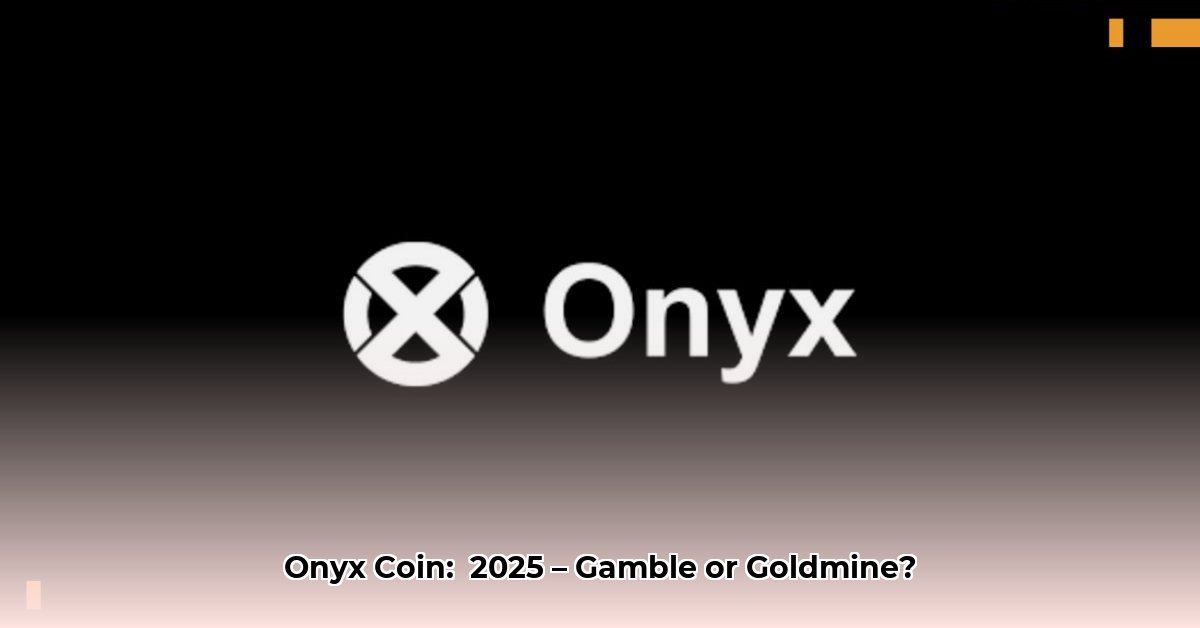
Understanding Onyx and its Technology
Onyx, a cryptocurrency developed by JP Morgan, operates within a broader financial ecosystem. Its native token, XCN, facilitates transactions and governance within this system. The Onyx Protocol leverages the Arbitrum platform, aiming to enhance transaction speed and reduce costs. XCN acts as the fuel for this system. The XCN Ledger, functioning on Arbitrum (a Layer-2 scaling solution), is central to the Onyx ecosystem's efficiency. A robust ledger is essential for sustained growth and investor confidence.
Analyzing Onyx's Potential: A Balanced Perspective
Determining whether Onyx coin (XCN) represents a sound investment requires a multifaceted analysis. While its integration within JP Morgan's established financial infrastructure offers a degree of stability compared to many other cryptocurrencies, significant risks remain.
Utility: XCN's utility within the JP Morgan ecosystem distinguishes it from purely speculative cryptocurrencies. Its role in facilitating transactions and governance provides inherent value. However, this real-world application does not guarantee profitability. Many useful technologies fail to achieve widespread adoption and financial success.
Market Dynamics: The cryptocurrency market demonstrates extreme volatility. Price predictions for XCN vary widely, ranging from optimistic projections of $0.45 to $0.70 by 2025 to more conservative estimates around $0.02 to $0.05. This discrepancy underscores the inherent unpredictability of the market. Furthermore, a concentrated ownership of XCN heightens the risk of price manipulation, a significant concern for potential investors.
Technological Risks: The XCN Ledger's reliability is paramount. Any technological failures, security breaches, or network disruptions could severely impact the value of XCN and erode investor confidence. The complexity of the technology introduces an element of uncertainty that cannot be overlooked.
Regulatory Risks: The regulatory landscape for cryptocurrencies remains fluid. New regulations could significantly impact XCN's value and adoption. Uncertainty surrounding future regulatory developments constitutes a substantial risk for investors.
Investment Considerations: Weighing Risks and Rewards
The decision of whether or not to invest in XCN depends heavily on individual risk tolerance.
Risk Assessment:
| Risk Factor | Likelihood | Potential Impact |
|---|---|---|
| Market Volatility | High | Very High |
| Regulatory Uncertainty | Moderate | Very High |
| Technological Failure | Low | Moderate |
| Market Manipulation (Concentrated Holdings) | Moderate | High |
Potential Rewards: The potential for significant returns exists if the Onyx Protocol achieves widespread adoption and sustains technological robustness. However, several factors could prevent this.
Potential Risks: The inherent volatility of the cryptocurrency market, coupled with the regulatory uncertainty and the risk of concentrated holdings, presents considerable downside potential. Losses could be substantial.
How to Mitigate Onyx Token (XCN) Market Concentration Risk
Market concentration is a crucial risk factor. Mitigating this involves a diversified investment strategy. Spreading investments across multiple assets reduces the impact of a single asset's decline. Thorough due diligence, including a comprehensive understanding of the technology behind XCN and the overall market conditions, may help reduce some level of uncertainty. Finally, a realistic assessment of your own risk tolerance is paramount.
Conclusion: A Cautious Approach
Investing in XCN carries significant risks. While its integration within the JP Morgan ecosystem and its potential utility offer a degree of differentiation, the inherent volatility of the cryptocurrency market, the regulatory uncertainty, and the concentrated nature of XCN ownership necessitate a cautious approach. Potential investors should conduct thorough due diligence, understand their own risk tolerance, and only invest what they can afford to lose. This article does not constitute financial advice.